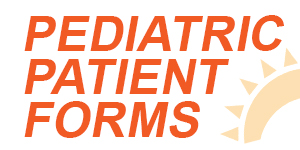Back pain can be a real pain in the, well, back! If you’ve ever experienced it, you know how debilitating it can be. But do you know the difference between a back strain and a back sprain? These two terms are often used interchangeably, but they are not the same thing.
Understanding the difference can help you manage your pain more effectively and seek the right treatment. In this article, we’ll unravel the mystery of back strains vs. sprains, and help you navigate the path to recovery.
What Are Back Strains?
Let’s start with back strains. A back strain occurs when a muscle in your back is stretched or torn. This can happen due to overexertion, improper lifting, or sudden movements. The muscles in your back are responsible for maintaining posture, supporting your spine, and facilitating movement. When a muscle is strained, it can cause intense pain, stiffness, and limited mobility.
One common cause of back strains is lifting heavy objects incorrectly. Whether it’s a suitcase, a box, or a piece of furniture, failing to use proper lifting techniques can strain the muscles in your back. It’s important to bend your knees, keep the object close to your body, and use the strength in your legs to lift, rather than relying on your back muscles.
Another cause of back strains is sudden, forceful movements. Activities like twisting your body too quickly, falling, or even sneezing forcefully can strain your back muscles. This type of strain often leads to acute pain and may take some time to heal.
What Are Back Sprains?
Now, let’s delve into back sprains. A back sprain is an injury to the ligaments in your back. Ligaments are tough, flexible bands of tissue that connect bone to bone, and they play a crucial role in providing stability to your spine. Sprains typically occur when these ligaments are stretched beyond their normal range of motion or torn.
Back sprains often result from activities that involve sudden and excessive twisting or bending of the spine. Sports-related injuries, slip and falls, or even car accidents can cause back sprains. The pain associated with a sprain is different from that of a strain; it’s more of a sharp, stabbing pain rather than the dull, aching pain of a strain.
Different Symptoms, Similar Treatments
While back strains and sprains have distinct causes, they share some common symptoms and treatments. In both cases, you may experience pain, stiffness, muscle spasms, and difficulty moving. Rest, ice, compression, and elevation (RICE) is a common initial treatment for both strains and sprains.
For both conditions, it’s important to avoid activities that exacerbate the pain. Resting your back, avoiding heavy lifting, and maintaining good posture are crucial for recovery. Gentle stretching and strengthening exercises, as prescribed by a healthcare professional, can aid in rehabilitation.
However, when it comes to recovery, it’s essential to note that back sprains often take longer to heal than back strains due to the nature of ligament injuries. In severe cases, sprains might require more advanced treatment such as physical therapy or, in rare instances, surgery.
Explore Chiropractic Care for Back Pain Relief
Awaken Chiropractic, your trusted Parker chiropractor offers expert care for back strains and sprains. Our experienced chiropractors can assess your condition, provide personalized treatment plans, and guide you through exercises and lifestyle adjustments. With a holistic approach to health, we address the root causes of your back pain, not just the symptoms.
Don’t let back pain hold you back any longer. Contact us at Awaken Chiropractic to schedule a consultation and take the first step toward a pain-free, healthy back. Remember, understanding the difference between a back strain and a back sprain is the first step, but seeking professional care is the key to a full recovery.






